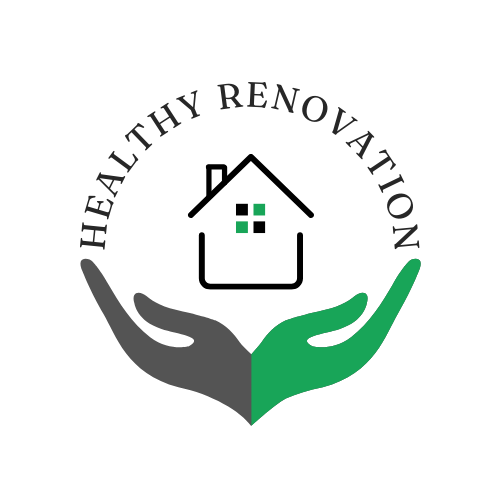Healthy Home Lighting: Bright Ideas for a Brighter, Healthier Home
When it comes to home design, lighting often takes a backseat to paint colors, furniture, and layout. However, lighting plays a crucial role in creating a healthy living environment. The right lighting setup not only enhances aesthetics but also positively impacts mood, sleep, and productivity. In this blog, we’ll explore the most efficient setup for Healthy Home Lighting and share the top five ideas and improvements you can implement to ensure your home is a beacon of well-being.
Why Healthy Home Lighting Matters
Lighting affects more than just how we see; it influences how we feel. Poor lighting can cause eye strain, disrupt sleep cycles, and even contribute to mental health challenges like seasonal affective disorder (SAD). On the flip side, Healthy Home Lighting can:
- Improve Sleep Quality: Mimicking natural light helps regulate your circadian rhythm.
- Boost Productivity: Bright, focused lighting enhances focus and reduces fatigue.
- Promote Well-Being: Warm, ambient lighting fosters relaxation and reduces stress.
To make the most of these benefits, let’s look at how to design an efficient setup for Healthy Home Lighting.
The Most Efficient Setup for Healthy Home Lighting
- Incorporate Layered Lighting: Layered lighting combines three types of light—ambient, task, and accent.
- Ambient Lighting: Provides general illumination (e.g., ceiling fixtures, wall-mounted lights).
- Task Lighting: Focused lighting for specific activities like reading or cooking.
- Accent Lighting: Adds depth and highlights design features (e.g., LED strips, spotlights).
- Maximize Natural Light: Natural light is the gold standard for healthy lighting. Use sheer curtains, strategically placed mirrors, and open floor plans to maximize daylight.
- Use Smart Lighting Systems: Smart bulbs and lighting systems allow you to customize brightness and color temperature throughout the day, aligning with your body’s natural rhythms.
- Install Energy-Efficient Bulbs: LED bulbs are not only cost-effective but also allow control over color temperatures, ranging from warm white (ideal for relaxation) to daylight (perfect for tasks).
- Focus on High-Quality Fixtures: Select fixtures that minimize glare and provide even light distribution to avoid eye strain.
Top 5 Ideas for Healthy Home Lighting
- Circadian Rhythm Lighting
Invest in circadian lighting systems that adjust the color temperature throughout the day. Morning light should simulate daylight to energize you, while evening lighting should transition to warmer tones to signal your body to wind down.
IDEA: Install tunable LED lighting in common areas to support a natural day-night cycle. - Biophilic Lighting Design
Combine lighting with natural elements. For instance, place lights near plants or water features to create a connection with nature. This not only elevates the design but also improves mental health by mimicking outdoor environments.
IMPROVEMENT: Use LED strips to backlight plants, creating a soothing atmosphere. - Dimmer Switches for Flexibility
Lighting needs vary throughout the day. Install dimmer switches to control the intensity of light based on your activities and mood.
IMPROVEMENT: Add dimmers to bedrooms and living rooms to transition from work mode to relaxation effortlessly. - Task Lighting in Workspaces
Dedicated task lighting is essential for productivity and eye health. Adjustable desk lamps with blue-light blocking capabilities are excellent for home offices.
IDEA: Choose lamps with adjustable arms and brightness settings for maximum versatility. - Lighting Zones for Emotional Impact
Create zones with different lighting atmospheres. For example, soft lighting in dining areas encourages conversation, while bright lighting in kitchens promotes functionality.
IMPROVEMENT: Use pendant lights in dining areas and under-cabinet LEDs in the kitchen.
Easy Improvements for Healthy Home Lighting
1. Upgrade to Full-Spectrum Bulbs
Full-spectrum bulbs mimic natural sunlight, reducing eye strain and improving mood. They are especially useful in areas where natural light is limited, such as basements or bathrooms.
2. Add Motion Sensors
Motion sensors conserve energy and provide convenience, especially in hallways, bathrooms, and closets. They eliminate the need for constant switching and ensure lights are only used when necessary.
3. Install Skylights or Solar Tubes
For spaces with minimal natural light, consider skylights or solar tubes. They bring sunlight into darker areas, improving energy efficiency and aesthetics.
4. Control Blue Light Exposure
Blue light disrupts sleep by suppressing melatonin production. Use warm, dim lighting in bedrooms and avoid LED screens before bedtime.
5. Prioritize Safety Lighting
Ensure adequate lighting in stairways, kitchens, and outdoor areas to prevent accidents. Nightlights in hallways and bathrooms are especially useful for navigating safely in the dark.
Healthy Lighting for Different Rooms
Living Room
Use layered lighting to accommodate both relaxation and entertainment.
Add table lamps with warm tones for reading and accent lights to highlight art or décor.
Kitchen
Focus on bright task lighting for countertops and prep areas.
Install pendant lights above the island and under-cabinet LED strips for functionality.
Bedroom
Choose warm, dimmable lights for a calming effect.
Incorporate bedside lamps with adjustable brightness for reading.
Bathroom
Use bright, even lighting around mirrors for grooming.
Consider motion-sensor lights for late-night trips.
Home Office
Opt for cool-toned task lighting to boost focus.
Position desk lamps to minimize screen glare and eye strain.
Final Thoughts
Creating a healthy home isn’t just about adding the right furniture or paint colors; it’s about designing an environment that promotes wellness—and Healthy Home Lighting is key. By incorporating natural light, smart systems, and energy-efficient solutions, you can enhance your home’s ambiance and support your overall well-being.
Whether you’re upgrading a single room or redesigning your entire home, these ideas and improvements will help you create a brighter, healthier space for you and your family.
